Finding the most excellent things to do in San Sebastian
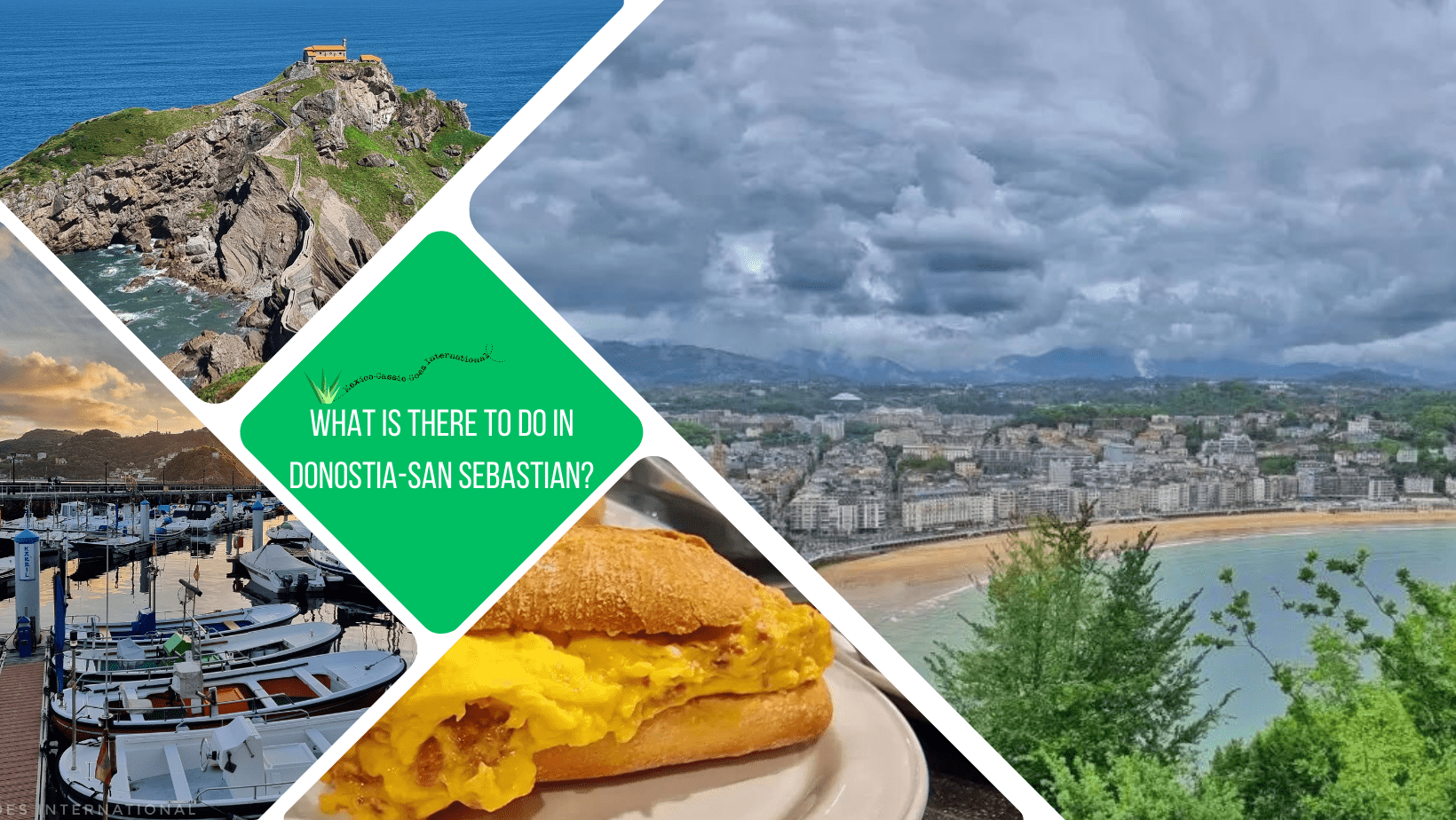
San Sebastian in Spain’s Basque Country is a magnificent choice for a vacation. Not only is the city itself absolutely beautiful but it’s also located in a wonderfully diverse, gorgeous and exciting part of Spain. In this article we’ll share the very best things to do in San Sebastian to ensure that your time in the city is filled exactly as you wish it to be.
Whether you’re a foodie, a beach lover, an architecture aficionado, nature lover or travelling with kids, you’re going to have a great time in this fabulous city.
There are affiliate links in this article. If you click and make a purchase I could make a small sum at zero cost to you. Thank you!
In a rush? Don’t have time for a whole long article? Need a tl/dr?
🏨 Best budget hotel: Welcome Gros Hotel – I stayed here. It’s clean, comfortable, safe and friendly. It’s also well located. Highly recommended.
🏨 Best & good value luxury hotel: Abba Hotel – friends of mine stayed here and rated it very highly for comfort, value and location.
Check other hotel options here
🫒 Best pintxos bar: Bar Sport
👣 Best pintxos tour: This 3 hour tour of San Sebastian’s pintxos scene is my top recommendation
👣 Best day trip: Full day tour to Bilbao and the incredible San Juan de Gaztelugatxe
➡️ Read more about day trip options here
🚗 Rent a car here so you can explore on your own
➡️ Looking for kid specific San Sebastian information – click here
➡️ Wondering how many days you’ll need in San Sebastián? – click here
Before we take a look at what to do in San Sebastian, though, we need to talk a little about language, the names for the city & the region and why it’s less simple than it might be.
What’s in a name?
Quite a lot, actually, particularly in this region of Spain.
The Basque Country is the name given to the region in which the Basque people live. Within this region are: the Autonomous Communities of the Basque Country, and Navarre in Spain and the Northern Basque Country in France.
The region is not culturally or linguistically homogenous but it the home of the Basque people across two European countries.
What is this region called?
Basque: Euskal Herria
Spanish: País Vasco
French: Pays Basque
English: Basque Country
In this article, as an English speaker writing mainly for English readers, I shall refer to the region as “The Basque Country”.
San Sebastián is the city’s Spanish (Castilian) name. In Basque the city is called Donostia. On maps and official texts you’ll often see it referred to as Donostia-San Sebastián.
The names are actually a direct translation of each other as Dona/e/i means Saint in Basque and the second half of the word, ‘stia’, is a shortened form of Sebastian. Both mean Saint Sebastian.
A note on language
In Donostia-San Sebastian, two languages are spoken
Basque – called Euskara in Basque and Vasca in Spanish
Spanish – called Castellano (Castillian) in Spain because there is no one national language in the country. Some Autonomous Regions have their own language (think Valencia & Catalonia) while others speak Castellano. Andalucía, for example, speaks Castellano.
For many years, under Franco, the Basque language was forbidden. It was driven underground and in many places, almost entirely lost. In modern, democratic Spain, Euskara is an official language in this region and people are working hard to save their language and teach it to the younger generations.
Not everyone in San Sebastian speaks Basque and no one will mind if you speak Spanish (Castilian/Castellano) but it never hurts to learn a few words.
Most people working with tourists will speak some English.
Please – Mesedez
Thank you – Eskerrik asko
Hello – kaixo (kaisho)
Googbye – Agur
Cheers – Topa!
Yes – Bai
No – Ez
What to do in San Sebastian
In this section we’ll look at the main attractions, the best places to visit and the best things to do broken down by section:
Food | Exploring the old town | Beaches and nature | Day trips
Tour Guides: Personally, I can’t always afford to take guided tours but when I do take them I’m always blown away by the knowledge and love the guides have for their home towns. In this article I’ll share various excellent tour options where relevant.
Food in San Sebastian
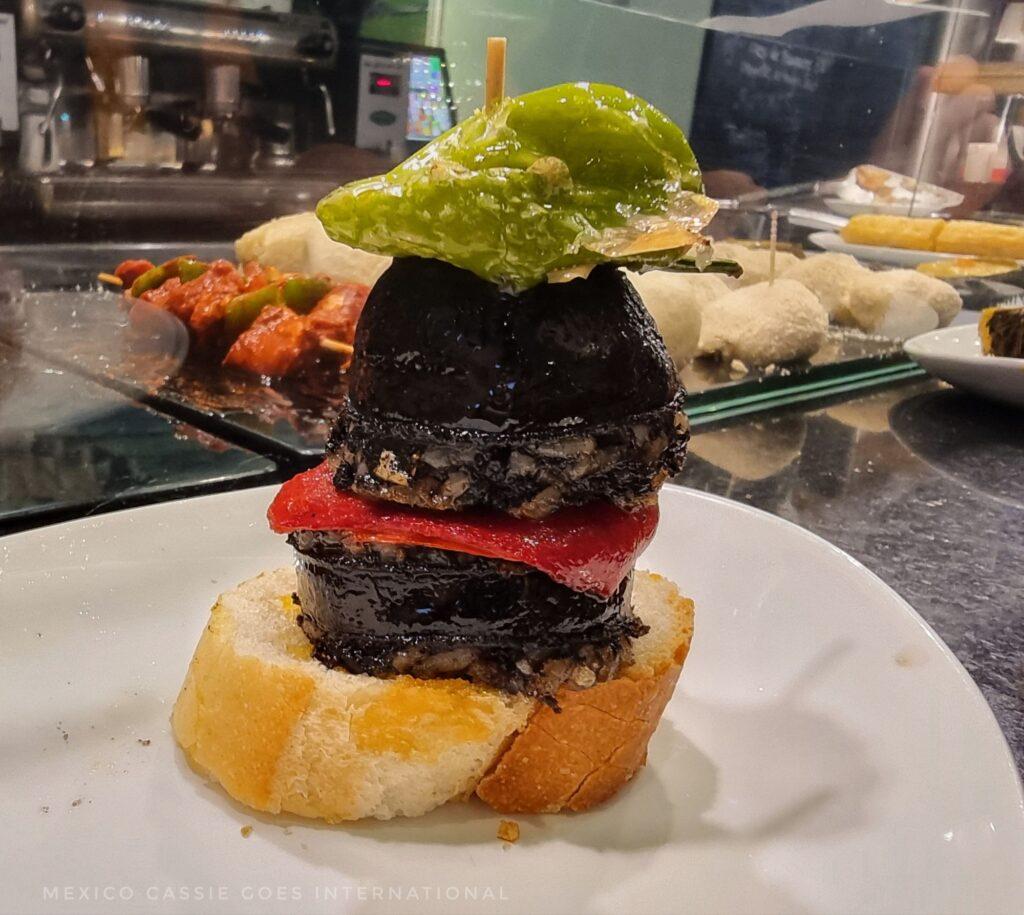
Donostia-San Sebastian has a reputation as a foodie city and with excellent reason. Every single thing I put in my mouth in this place was sublime.
⭐️ There are four Michelin star restaurants in the city and numerous others that have are written up on the Michelin restaurant website. However, even if you have zero interest in Michelin recognised quality, you’ll still be eating extremely well in this excellent city.
⭐️ Fermín Calbetón is the street to head for if you’re looking to explore the pintxos scene.
Pintxos bars in San Sebastian
🫒 Pintxos (pronounced pinchos) are essentially Basque tapas.
A tapa is a small plate designed for sharing (tapa means ‘lid’ in Spanish and this plate can serve as a lid to your glass).
A pintxo is traditionally a slice of bread with various toppings on it held in place with a cocktail stick
Of course, both tapas and pintxos have evolved somewhat from these definitions but they more or less hold true.
🫒 The first time I was in San Sebastian, I think in 2000, we would go into pintxos bars, and enjoy a quiet pintxos or 6 with a few beers. Now, in the roaring-(20)20s, there’s nothing quiet about eating pintxos in San Sebastian, a least certainly not if you’re in the popular parts of city centre or in the Gros area.
At night, these bars can be heaving because everyone wants to try pintxos and everyone wants to be in on the ‘action’.
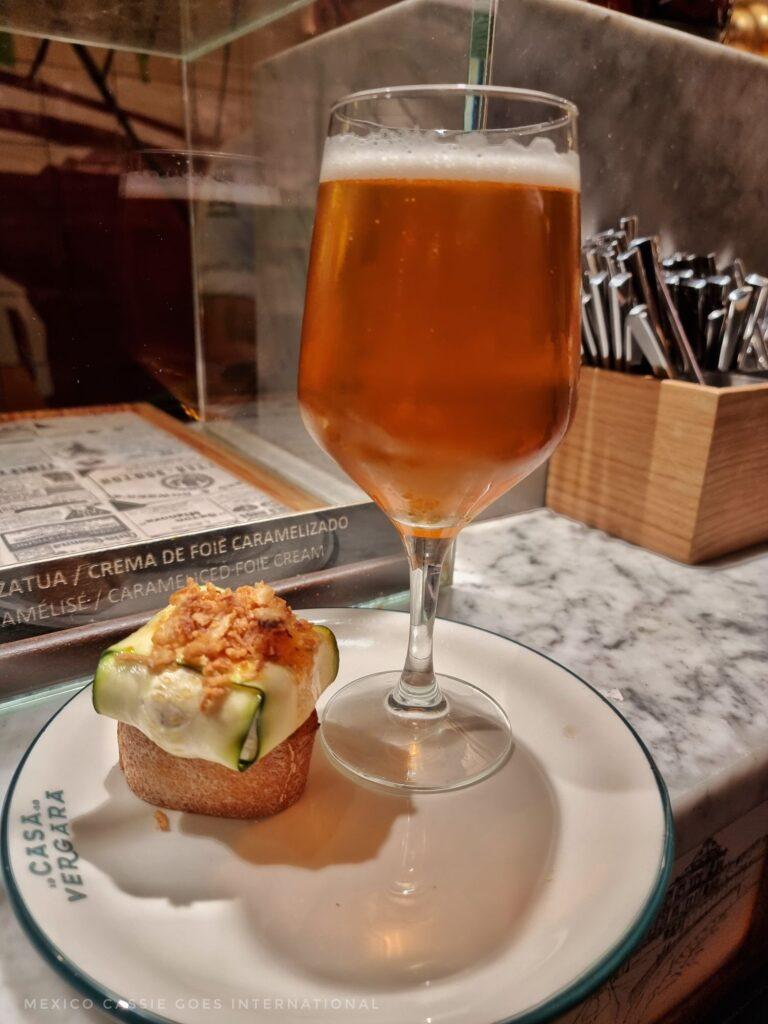
How to enjoy pintxos
➡️ If you want to really enjoy pintxos, learn about the Basque food tradition and find your way around the food scene, I highly recommend taking a pintxos tour. Your tour will include a local guide who will take you to their favourite pintxos spots and advise you on what to try.
🍅 To learn more about vegetarian food in Spain, read my helpful guide to vegetarian tapas.

Devour Tours Ultimate Pintxos & Alcohol Tour
On this 3 hour tour, you’ll get try 8 pintxos and 5 drinks as you explore San Sebastian with an expert local guide (adaptable to vegetarians).
Visit the pintxos bars best loved by locals and the most iconic plates from the city – including the famous burnt Basque cheesecake.
➡️ Be brave and go it alone – walk into any random pintxos bar and if you don’t speak Spanish, or recognise anything, just point and smile. Staff are generally very busy so may not have time to chat and explain things but they will not refuse to serve you.
Pintxos are definitely not a cheap meal anymore – each small plate will generally cost between €2.50 – €5 depending on where you are and the complexity of what’s on it.
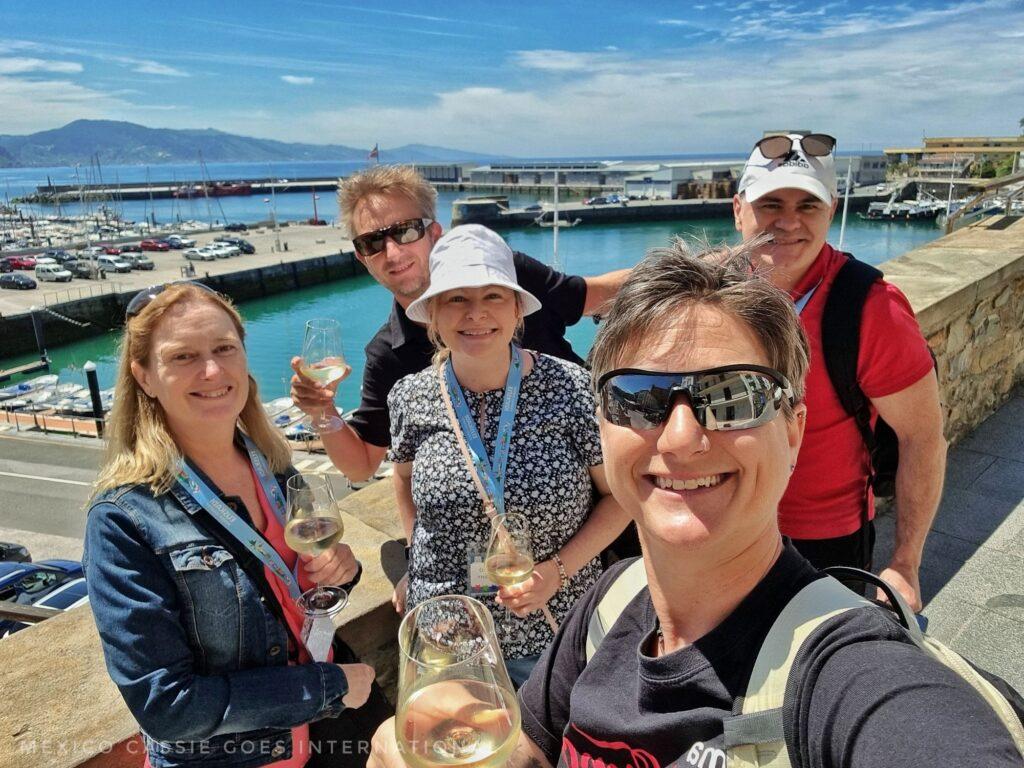
What to drink with your pintxos
🍺 Local cider is very famous. It’s worth trying while you’re in town. You can even visit a cider house to see how it’s made.
🍾 Txakoli – this is a local, fizzy white wine that is really quite delicious. I highly recommend trying it when you’re eating pintxos. There are also dedicated txakoli tours if you’re interested (pic above of Cassie and friends drinking txakoli in the sun)
🍻 Beer – of course everyone is drinking beer here. Order either a caña or a zurito. A caña is the typical small glass of beer and a zurito is even smaller.
Obviously, everyone will have their favourite spots in a foodie city like this so here are mine. I tried multiple pintxos in each of these places and am just sharing my absolute favourite plates.
⭐️ Bar Sport – Morcilla (black pudding) with a grilled pepper on top | a sardine on fresh cheese
⭐️ Casa Vergara – Artichokes | scallops to make you weep | fresh cheese wrapped in finely sliced courgette
⭐️ Atari Gasatroleku – Beef cheek | anchovies
➕ Casa Urola – I didn’t get to eat here but this pintxos restaurant is mentioned on the Michelin website as somewhere to visit
What else can you eat in Donostia?
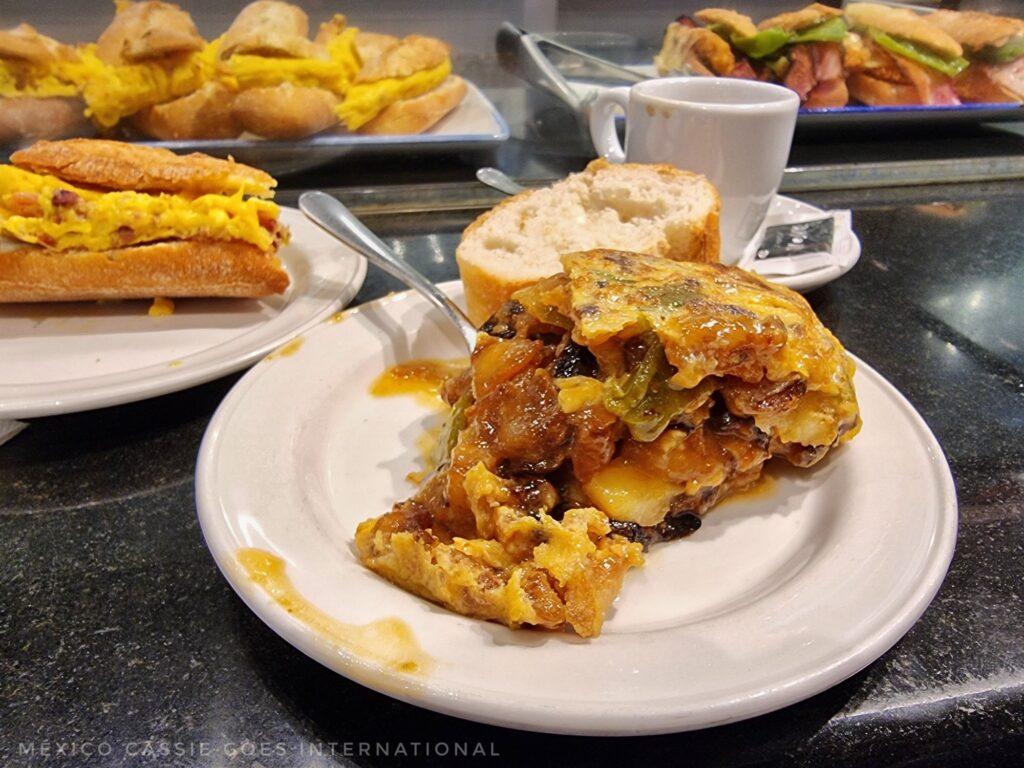
Of course, you don’t have to live on pintxos when you’re in Donostia-San Sebastian. There are plenty of excellent ‘regular’ restaurants too. These are my favourites:
Bar Antonio – there are two locations, one more for tourists and one that’s really very ‘local’. I went three times to the ‘local’ spot. Bar Antonio is rightly famous for serving the best tortilla you can imagine (see above). It’ so good that once you’ve tried it you’ll never look at another tortilla without a hint of disappointment in your eyes. To grab a slice of this tortilla you really need to be there as the doors open for the breakfast crowd. Once it’s gone, it’s gone. Get up early, and thank me later.
Geralds Bar – another popular restaurant (in Gros), the menu del día is a great bargain but everything on the menu is delicious. I’m still salivating not only over the plate I had here but the one the people on the table next to me were sharing too.
Tedonee Jatetxea berria – this health food restaurant very kindly fitted me in when I showed up on a busy night without a reservation. I had to wait 30 minutes for a table but it was worth it for the vegetarian meal I’d been craving.
Basque Burnt Cheese Cake
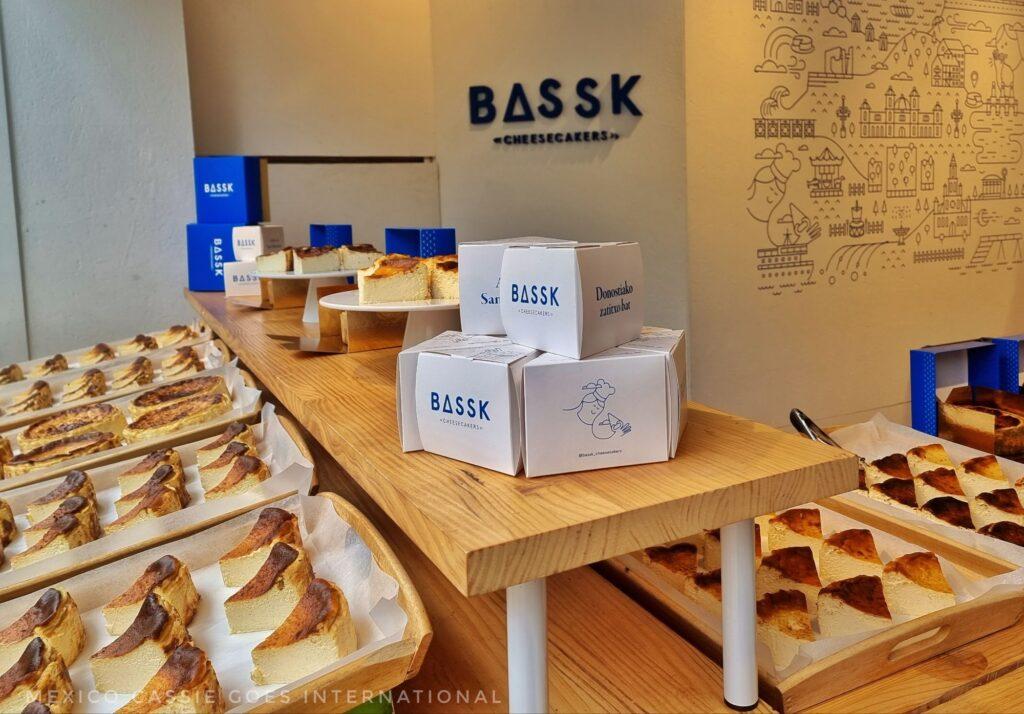
Basque cheese cake is a Thing (yes, with a capital T). It’s a delicious, wonderful, squidgy thing and I am a big fan of it. I tried a slice from Baask and fell in love. I’m not generally a cake eater but this cheesecake isn’t too sweet so I was able to gobble it up. It actually took me a couple of days to finish my slice it was so big.
Many people recommend La Viña for its cheesecake but sadly I didn’t make it there to confirm – next time!
Markets
Mercado San Martín and Mercado de la Bretxa are the two main markets in town. My personal view is that they not super excitingly wonderful markets but they’re fine if you’re looking to buy fresh produce.
There are also numerous delicatessens and incredible looking bakeries all around town – it really is a gourmet’s heaven
Exploring San Sebastian’s Old Town and Harbour

The old town of Donostia-San Sebastián is a delight to wander through. Not only is it full of historic buildings, cute shops, incredible pintxos bars and narrow streets, but it’s also flanked by the Bay of Biscay! It has an amazing beach (more on that later) & the harbour offers gorgeous views. The culture and city’s history are fascinating too.
Museo de San Telmo
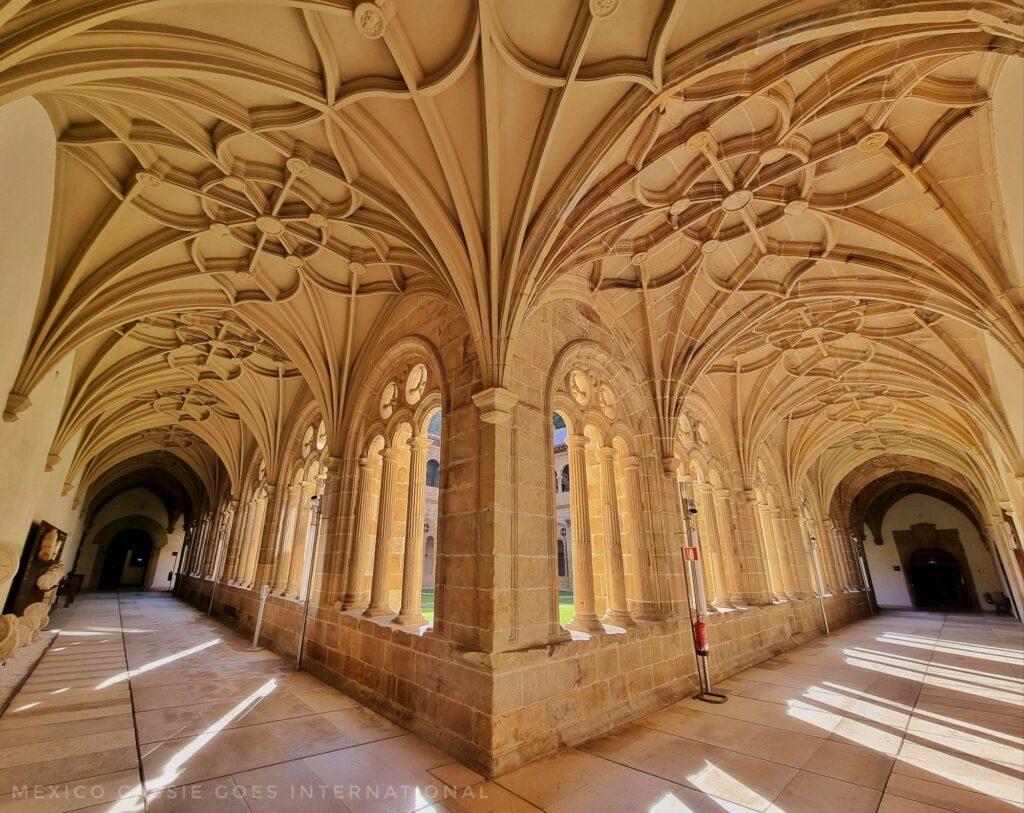
This small museum is a delight to explore and if you are at all interested in learning about Basque history.
The original building was a Dominican convent, built in the 16th century, in the Gipuzkoa style (a fusion of Gothic and Renaissance styles). The ground floor exhibitions are housed in rooms off the fabulous original courtyard and within the original San Telmo church are the mind blowing Sert Canvases. These are apparently considered to be the museum’s finest jewels. The paintings cover the most important events in Basque history.
The museum is free on Tuesdays and I’d go so far as to say it’s a highlight of the city.
Aquarium
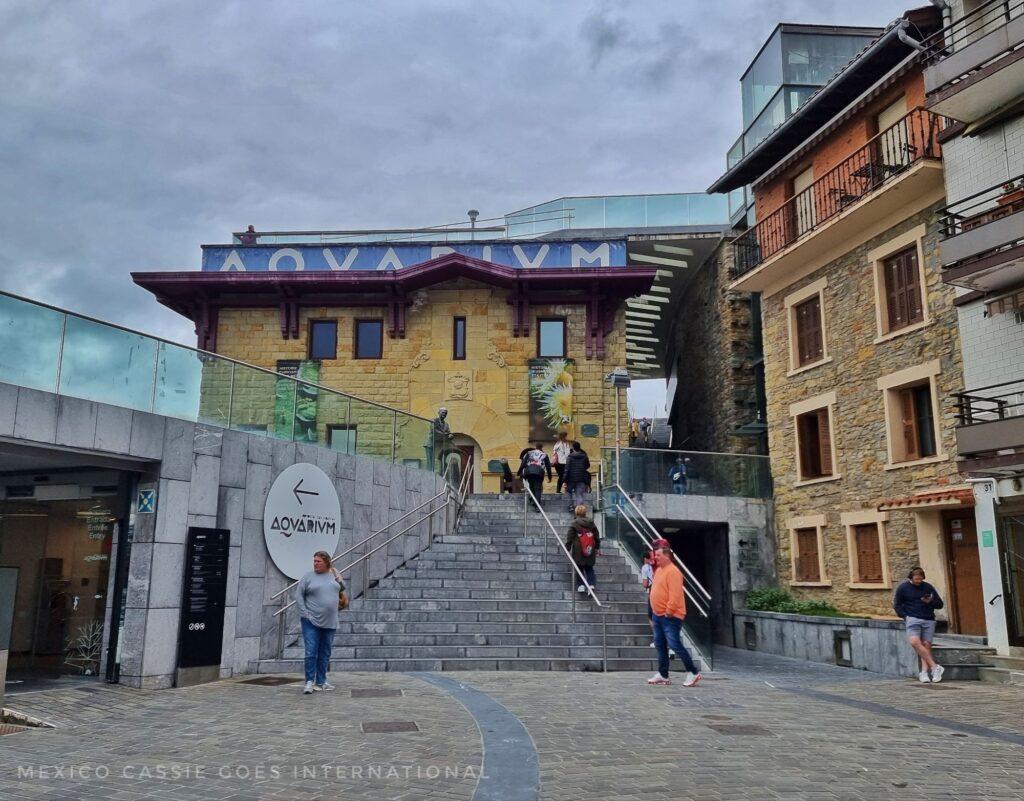
The small city aquarium gets very good reviews. The first section deals with the history of the region and the sea, while the second is focused on marine life.
Churches
There are plenty of churches in Donostia-San Sebastian but honestly, I didn’t go inside any of them. One interesting church fact is that there is a 1km straight walk between the Basilica de Santa Maria and the city cathedral. You can walk it if you like. The Iglesia de San Vincente is another church people visit (that I didn’t).
Other awesome buildings
City hall (Donostiako Udaaletxea)
This amazing building is right on the sea front. You don’t need to do anything but acknowledge its presence (and there’s a water fountain by it, which is helpful).
Tabakalera
I went to a party in the Tabakalera. I don’t imagine you will but you can still check out the views from the top of this converted tobacco factory. Downstairs is very cool – there’s a restaurant/cafe, and an art gallery space that’s well worth checking out.
Also
Maritime Museum
If you have a few moments to stick your face in here and want to learn about Basque fishing, you could. I did.
Palacio de Miramar (Miramar Palace)
You’ll probably see this on the map or walk by it and wonder if you can visit – you can’t. It’s a conference centre with a nice old history.
Beaches and nature
One of the biggest draws of Donostia-San Sebastián is its beautiful city beaches. They’re really something special to behold.
🚿 Good to know: all along the beach fronts in San Sebastian you’ll find showers, changing rooms, toilets, drinking fountains, parking and snack shops. There are also regular playground spaces for the kids.
The 3 city beaches are:
Playa de la Concha
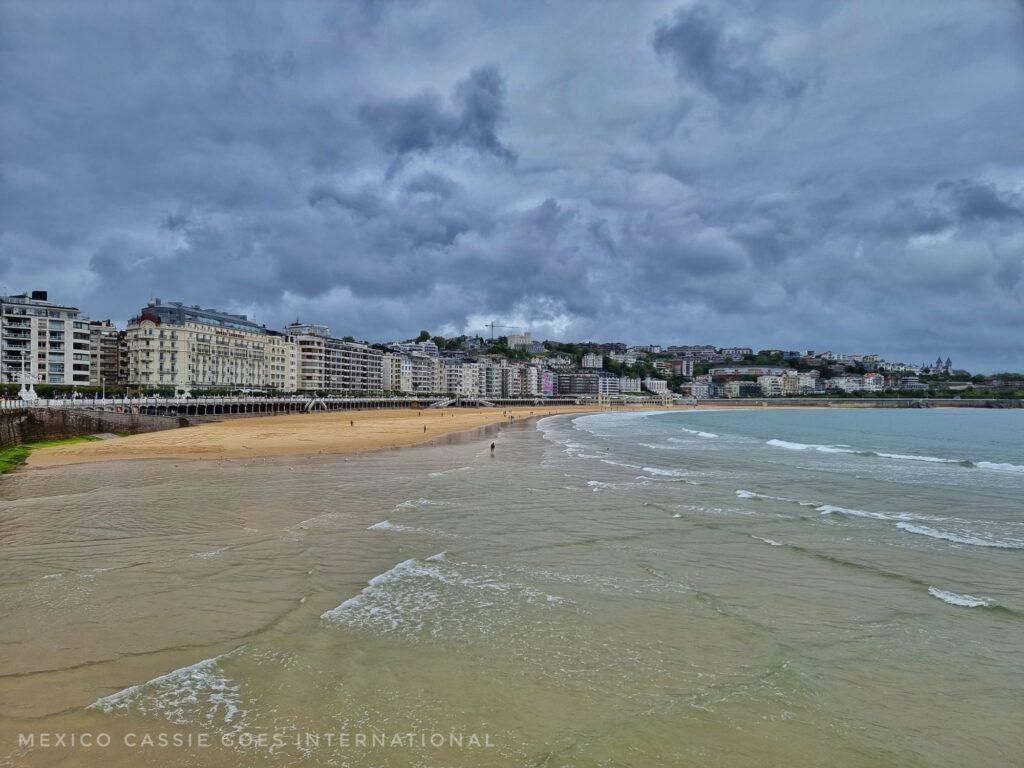
This beach is one of the most iconic sights of the city. The bay (I guess, shell shaped) offers soft sand, gentle waters and gorgeous views. Everyone coming to Donostia-San Sebastian will spend some time on this beach.
Unfortunately I didn’t really see the beach at its best on this trip but I remember it being absolutely glorious on a bright sunny day.
Ondarreta Beach

Ondarreta beach is a short walk from the main drag but it’s walkable from Playa de la Concha along the malecon (boardwalk). It’s the closer beach in the photo above.
Walk around the bay, through the tunnel (Antiguoko Tunela) where you will get to enjoy the art works of Víctor Goikotxea. And once you’re out the other side, you’ll find yourself on the Playa de Ondarreta.
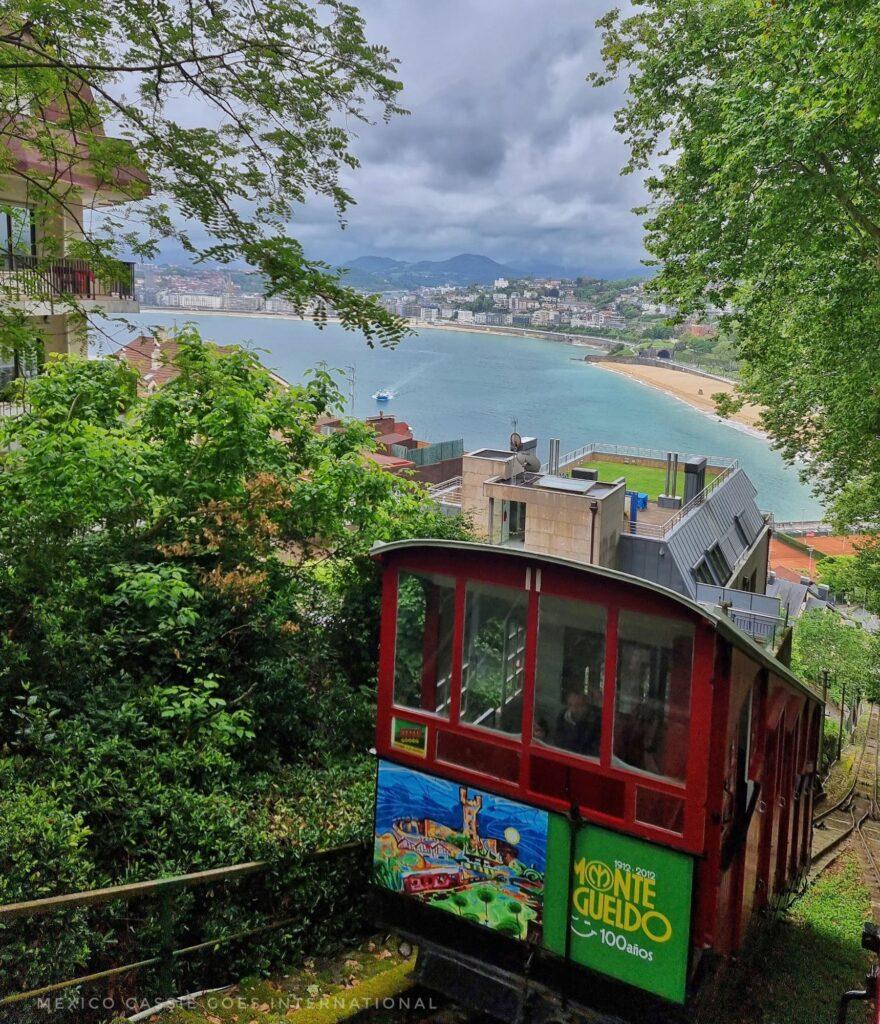
Don’t miss: Monte Igueldo Parque de Atracciones
While not a beach, Monte Igueldo is located by Playa Odarreta so we’ll include it here.
🚡 To reach the top of the ‘mountain’, and the old fashioned amusement park up there, your best bet is to take the vintage funicular up the side of the mountain. The views are good and it’s always fun to use a different form of transport.
🎢 Once up there, if you have small kids you’re bound to be distracted by the rides in the small amusement park. If you don’t have kids, you’ll be happy enough with the fabulous views over the city, the bay and, if you head out the other side of the park, the views over the next bay along too.
🌳 Bigger kids will enjoy the Canopy Donostia tree top adventure park that’s also up here.
⭐️ Igeldoko Dorrea (Torre de Igueldo)
If, like me, you like to get as high as possible (teehee), then don’t miss out on climbing to the very top of this tower for even better views over the region. It’s also a small museum. When I was there I very much enjoyed the photo exhibition of San Sebastian through the ages. This was a surprise highlight of the city for me.
Zurriola Beach
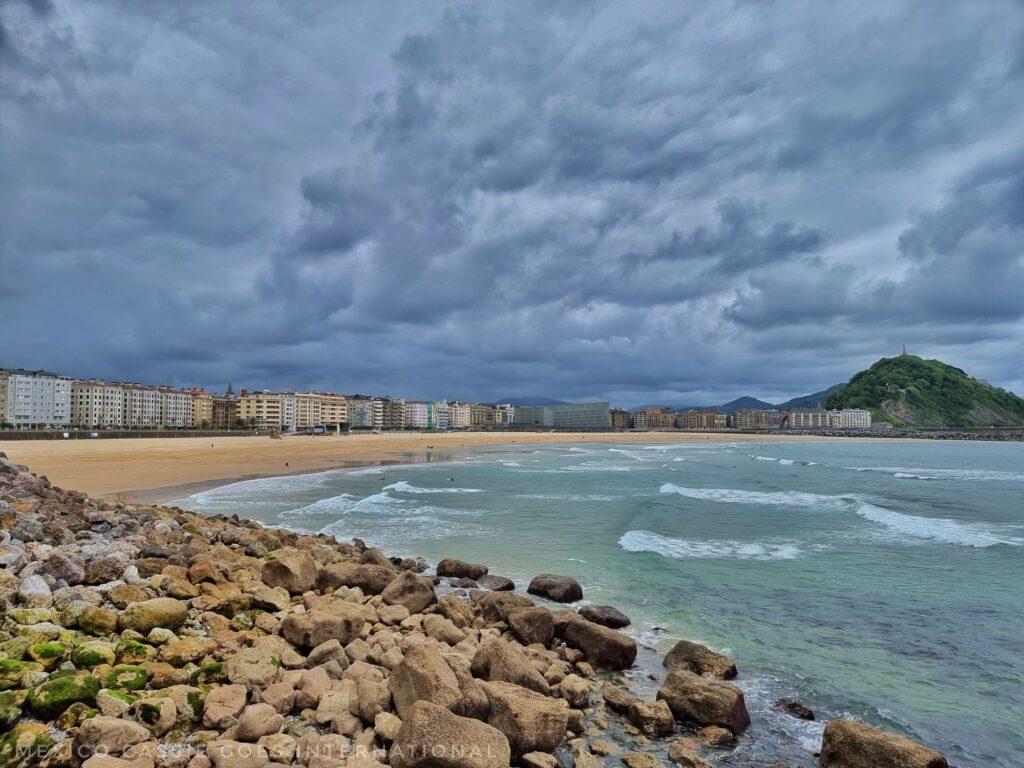
🏄🏽 Located on the other side of the river, this beach is the city’s ‘cool beach’ in a ‘cool neighbourhood’, the Gros region of San Sebastián. While it’s smaller than Playa de la Concha, Playa de la Zurriola is still not a small bay of a beach. It’s absolutely gorgeous and gets good swells so is particularly good for surfers. There are surf shops along the boardwalk too.
🏄🏽 On this beach there are important surfing events such as the European ASP Pro junior contest, held in July.
Water sports options
Unsurprisingly, in a city with 3 awesome beaches, there are some great water sport opportunities for visitors
Surfing
Playa de la Zurriola is the surfing beach so over that side of the city you’ll find surf shops, surf rental stores and surf schools.
Kayak/SUP
You can rent kayaks and paddle boards from Alokayak. They also offer tours.
Tours to Isla de la Santa Clara
In the city marina you’ll find options for touring the bay and/or visiting the Isla de la Santa Clara.
➡️ You can book you bay trip in advance here
➡️ Book a 2 hour, 2 bay trip here
Walking / hiking opportunities
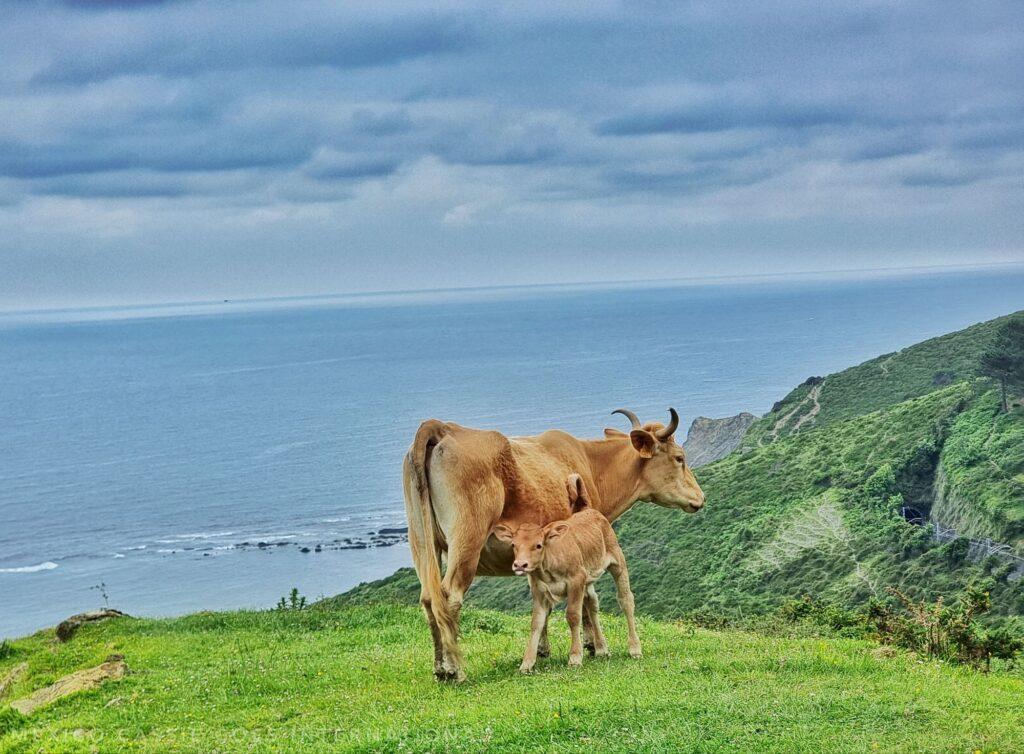
There are some gorgeous possibilities around Donostia-San Sebastian for walkers. While I was in the city I walked everywhere I could. I also met my brother here for our first foray into walking the Camino del Norte. We walked from Donostia to Deba and every second of it was stupendously beautiful. For me, it wasn’t far enough, one day I’ll return and walk more.
Walks around the city
The Urumea RIver
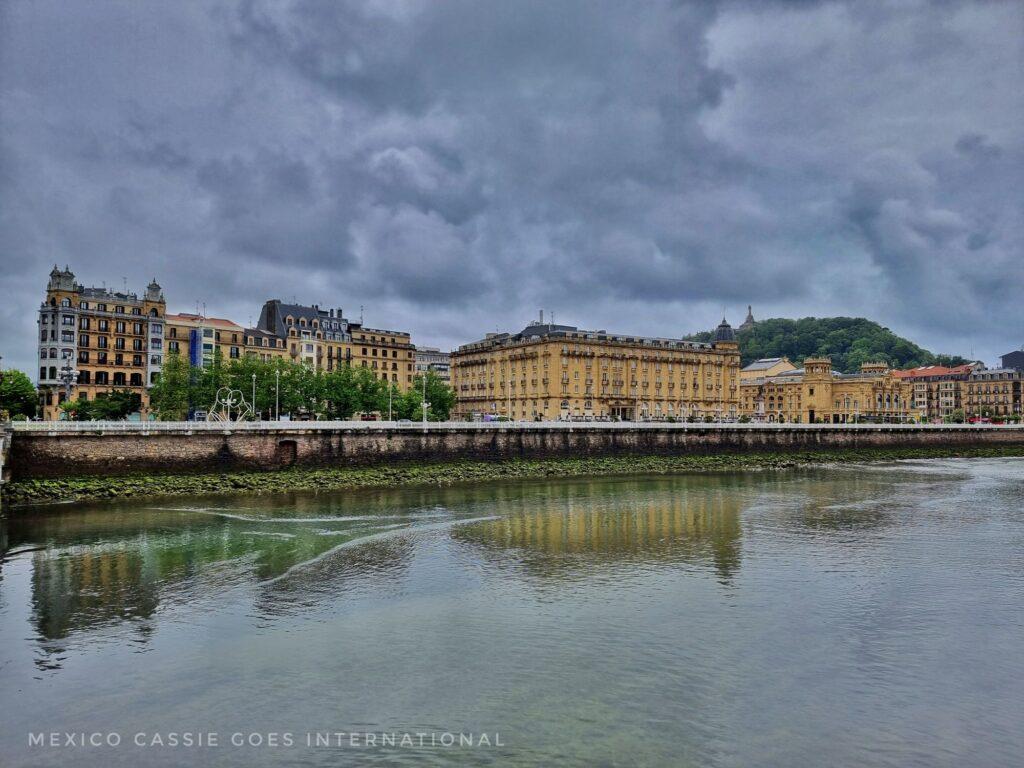
The Urumea River runs through the city of San Sebastian and out into the Bay of Biscay – following its path is a nice walk, particularly as you approach the old city and the river mouth. The architecture on both sides is really very impressive.
Pasealeku Berria / Promenade walk

Don’t miss the opportunity to walk the scenic route around Monte Urgull (flat) to enjoy the views over the Bay of Biscay, which are delightful at all hours of the day.
The Donostia-San Sebastián promenade runs from Sagüés to the Kursaal Convention Centre (the length of Playa Zurriola), then you cross the river and continue around Monte Urgull, and all the way along Concha Bay (made up of Playa de la Concha and Playa de la Ondaretta) until you reach the very end and the Peine del Viento (see below). This is approximately a 6km walk and is absolutely worth doing. Once you’ve seen the Peine del Viento you could then head up the Monte Igueldo (see above).
Peine del Viento (Comb of the Wind)
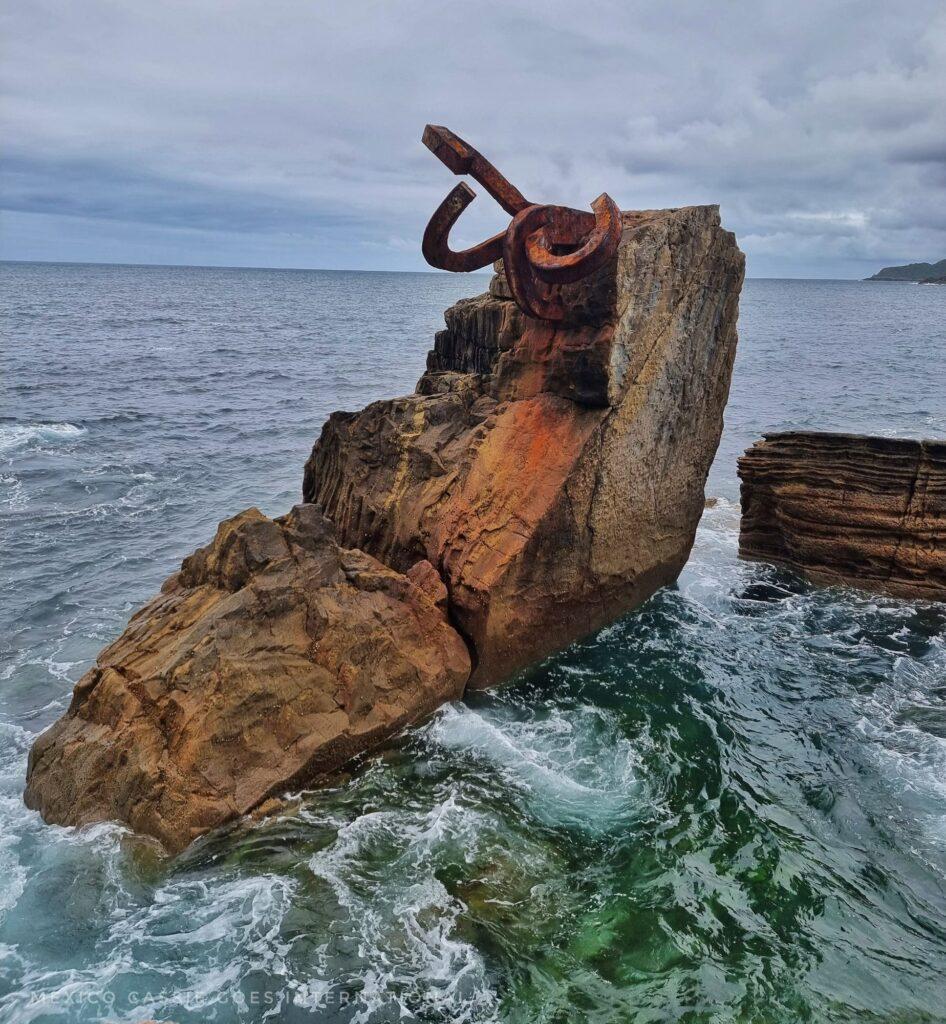
You don’t have to walk the full 6km of the promenade to reach here. Start from wherever you are and walk until you reach it.
This contemporary sculpture by Eduardo Chillida is an interesting spot to visit – the sound of the wind through the steel & concrete makes agains the backdrop of the noises of the sea but my favourite thing to do here is join the kids in standing over the ‘blowholes’ in the ground and let the wind rush up my shorts. The photo above is just one small piece of the sculpture.
Monte Urgull
Castillo de la Mota
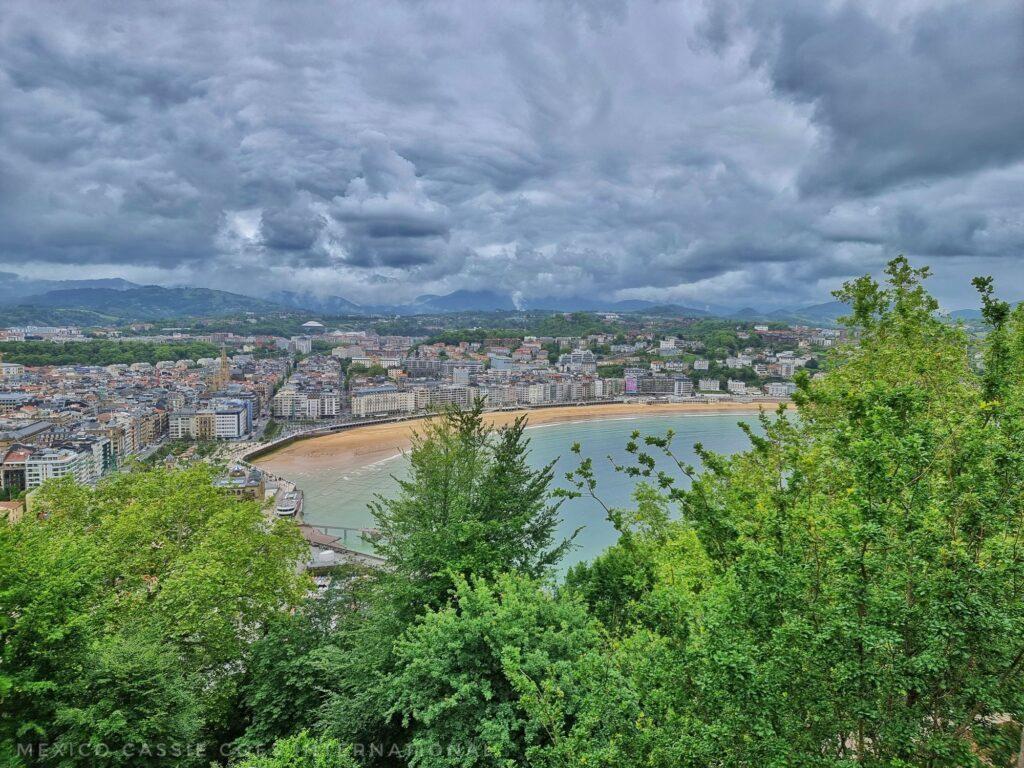
On the top of Monte Urgull (a hill at the old city end of the bay) is this ruined 12th century castle/fort. It’s a very pleasant walk up to the top through the trees. When I went I didn’t find it super easy to find a clear and directed path but there are paths and as long as you keep heading up, you’ll eventually get there. The views over Playa de la Concha and Santa Clara Island are breathtaking.
My recommendation is to just walk always heading up. It isn’t a big hill and you’re not going to get lost so just enjoy yourself amidst the trees.
Note there are no bathrooms up here, nor places to stop for water.
San Sebastian parks & plazas
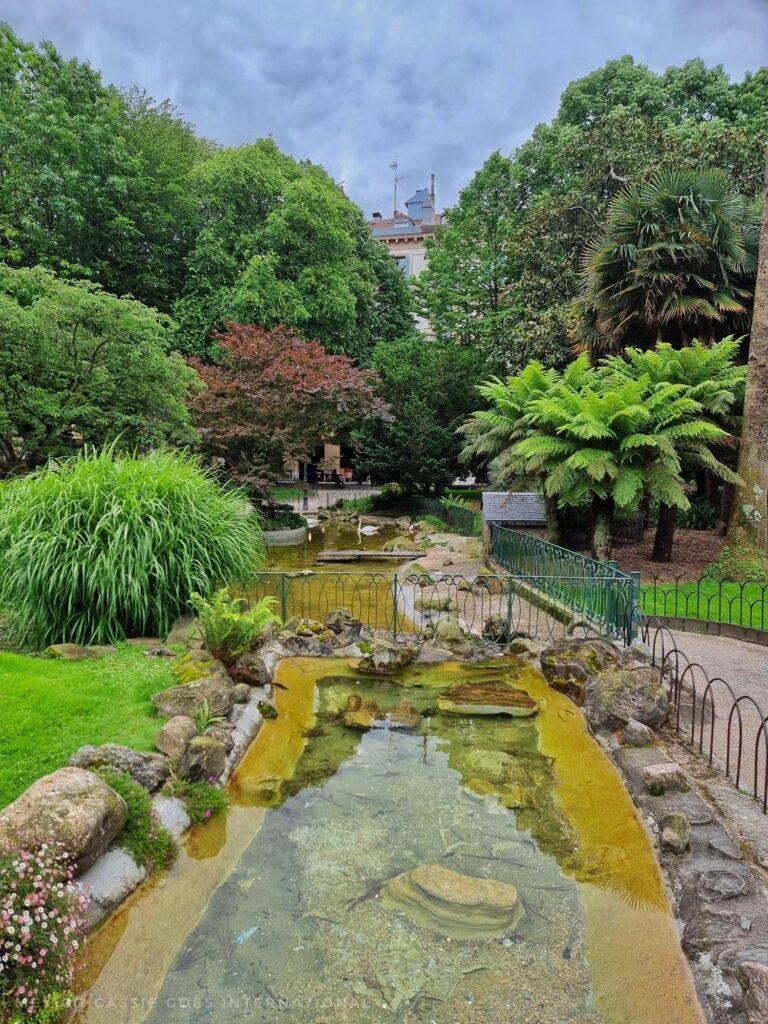
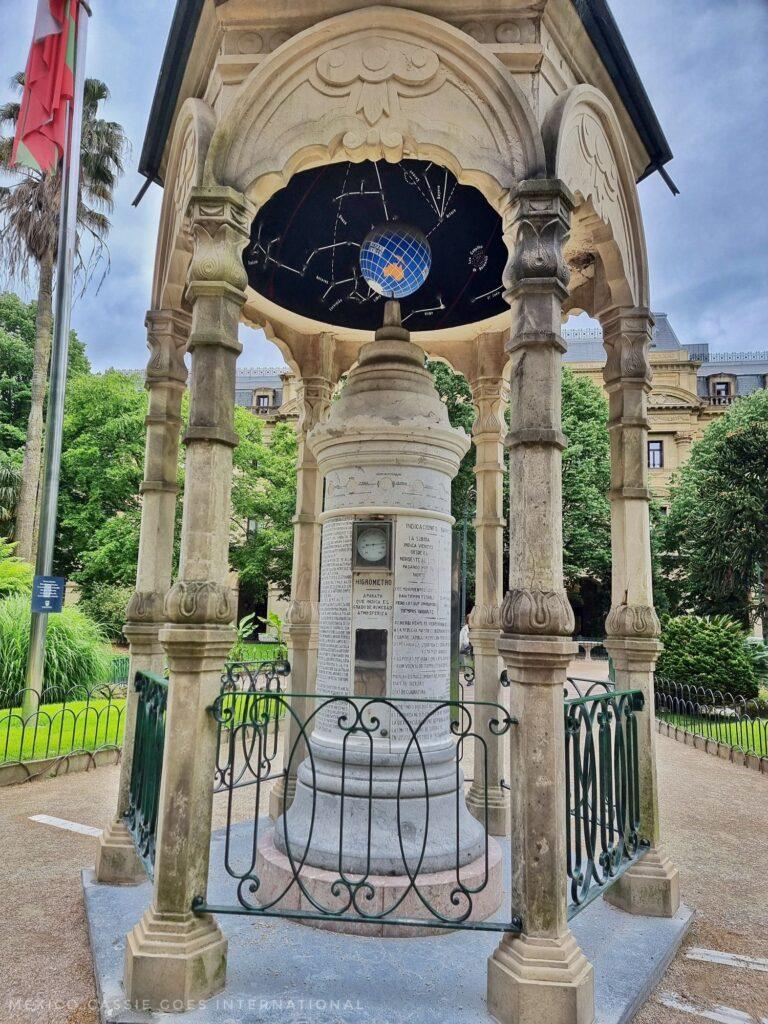
After all the climbing up hills for awesome views over the lush greenery, beaches and town, why not spend some time in the parks? Most people will tell you that the most interesting plaza in town is Plaza de la Constitucion but I massively disagree. I think Plaza Gipuzkoa is the most interesting of all – not only for its gorgeous water feature but for its fabulous meteorological monument.
Parque de Cristina Enea
Flanked by the river on two sides, this is a charming park where you can see peacocks and swans as you wander round.
Parque Alderdi Eder
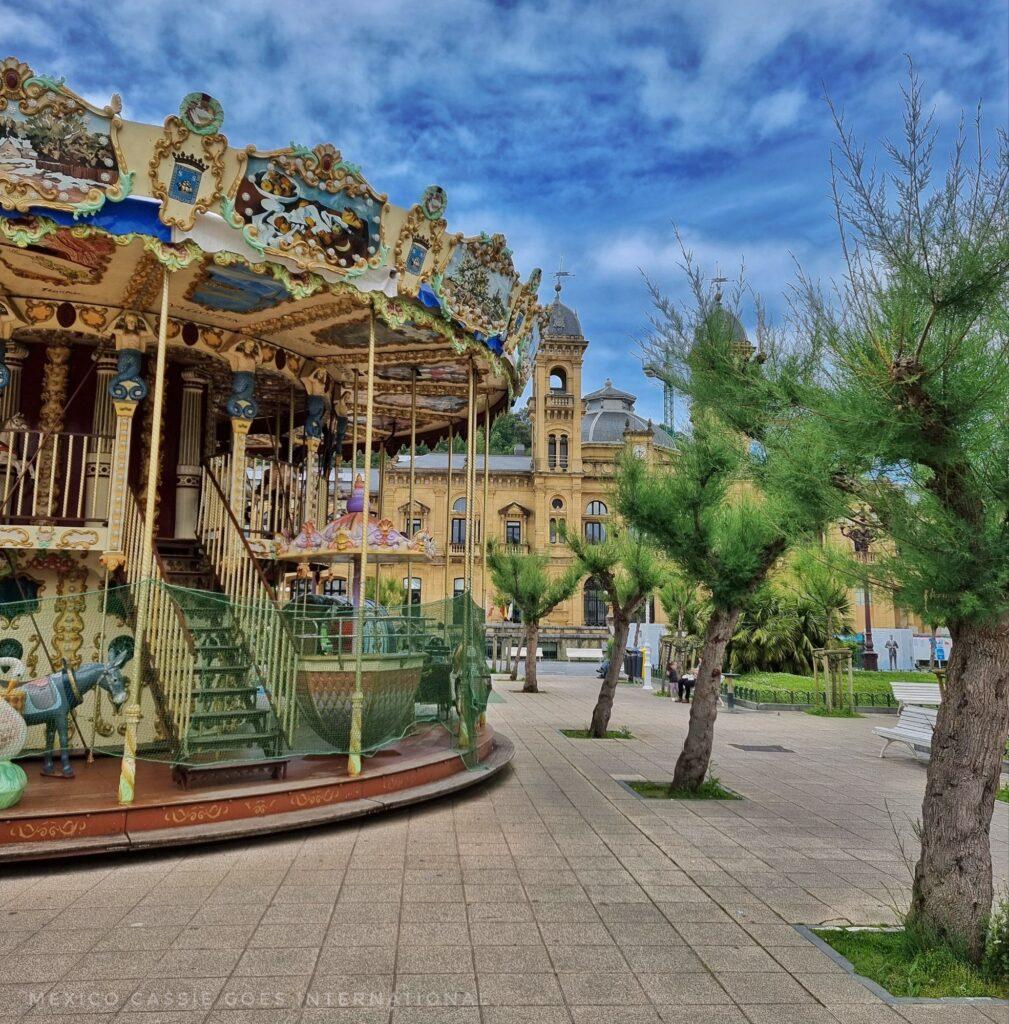
This park runs alongside Playa de la Concha. At one end is the gorgeous city hall. There’s an old fashioned carousel outside, which is fun for the kids. This isn’t a park full of grass. It’s an urban park with benches, trees and sculptures.
Pay attention to the incredible Tamarix Pentandra trees as you wander around. These trees were planted here specifically because they’re resistant to salt and wind. What’s particularly interesting about them is that they are almost all split down the middle.
Parque Aiete
A short walk from the centre of the city is this huge, landscaped park and cultural centre. You’ll find a cafe, playground and plenty of relaxing places to walk and explore.
Day trips
Take a day trip while you’re in Donostia-San Sebastián. It’s remarkably easy to explore the Basque Region with this city as your base.
Whether you decide to
🚗 rent a car and explore on your own
🚆 use public transport and explore on your own (the public transport system between the towns of the Basque Country is excellent. I very much enjoyed travelling on the small train between villages.)
there are some excellent day trips to be had around the region.
San Juan de Gaztelugatxe
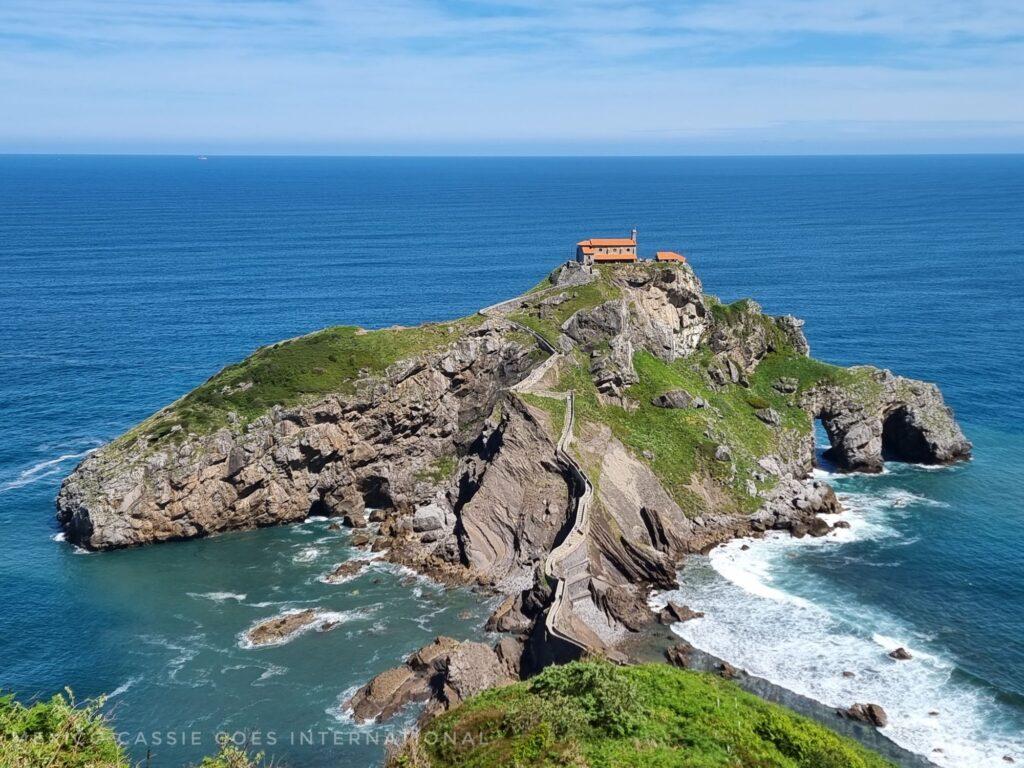
Made famous by the Game of Thrones, this section of the Basque Coast is wildly gorgeous and will take the breath away from anyone who lays eyes upon it.
This is an outcrop of land between two bays that can be reached by descending a fairly steep path and then climbing a large set of 241 stone steps up to the top of the outcrop and the church perched there.
Important to know
🚗 If you visit without a tour, there is a carpark but space is limited so early is better
🎟 It’s free to enter but during the summer months/peak season/weekends you will need to reserve your spot
🥾 I did see older people walking this but if you aren’t in fairly good shape I don’t recommend walking the whole route as it’s a steep walk down and then up again – there is a nice mirador about half the way down
🥨 There are bathrooms and snacks available at the start of the route and nothing after
🚗 1hr45 (with tolls)
👣 Take this 9 hour tour to San Juan de Gaztelugatxe & Bilbao. You’ll have the opportunity to explore around San Juan de Gaztelugatxe as well as visit Bilbao, the Guggenheim, and the old city.
Bilbao
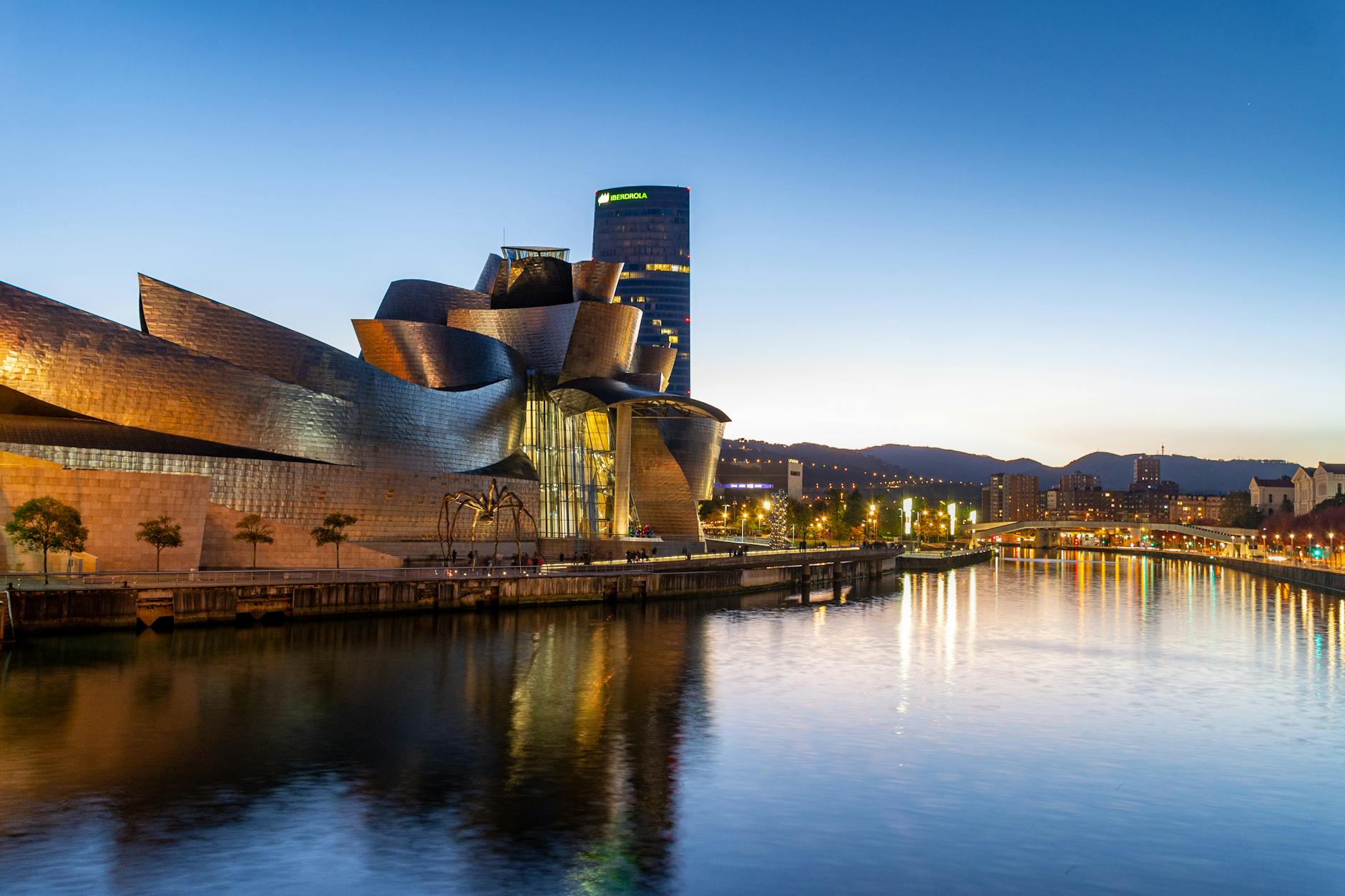
Bilbao is the de facto capital of the Basque Country. The most popular sight in the city is the Guggenheim Museum although it’s really a great city to wander around and take in the ambiance.
🚗 1hr10
🚌 1hr40 on the ALSA bus
👣 Take this 9 hour tour to San Juan de Gaztelugatxe & Bilbao. You’ll have the opportunity to explore around San Juan de Gaztelugatxe as well as visit Bilbao, the Guggenheim, and the old city.
Irun & Hondarribia
A short distance from San Sebastian, in fact, where the San Sebastian airport is located, are the two, lovely, small towns of Irun and Hondarribia. They’re perfectly visitable together for the day. It’s also possible to cross the French border here to explore Hendaye.
When I stayed in Irun I crossed the border by boat, bus, train and even on foot just because I could. I regret none of them. They were all fun and very, very easy. On my last morning I walked into France just to pick up real pains au chocolat (which they call chocolatines in the Pays Basque) and macarons to take home for my kids.
Hondarribia
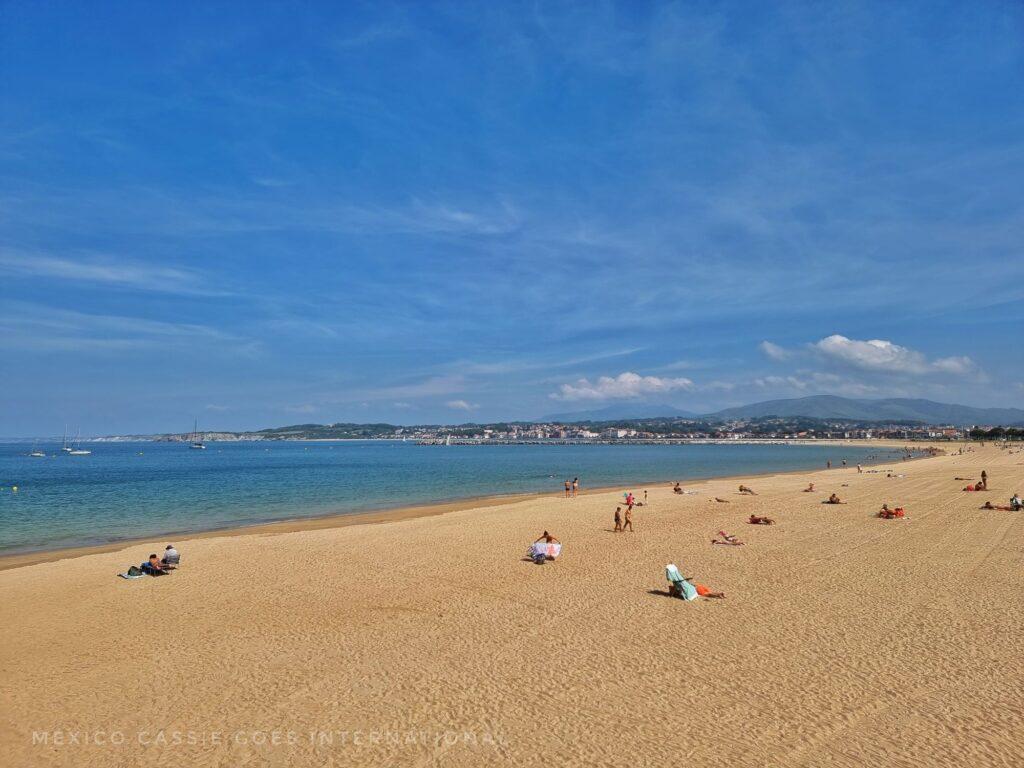
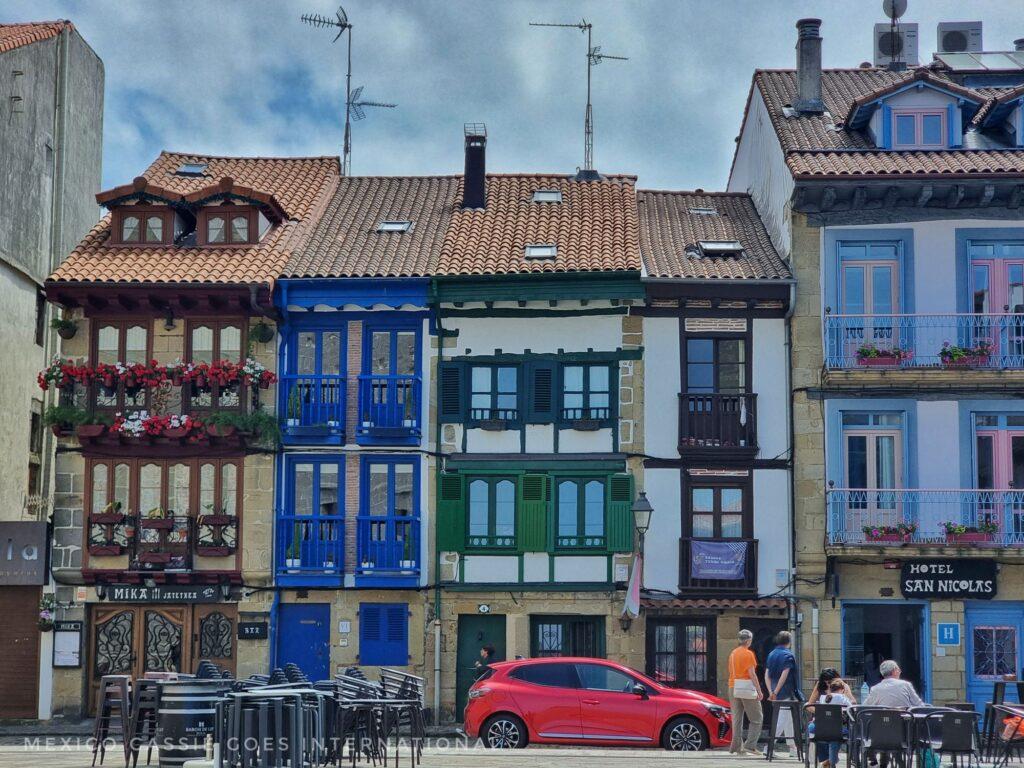
➡️ visit the Hondarribia beach, it’s delightful and calm
➡️ the very small old town is a gorgeous delight to walk around
➡️ Find the Hondarribia – Hendaye shuttle-boat for a fun way to visit France
Irun
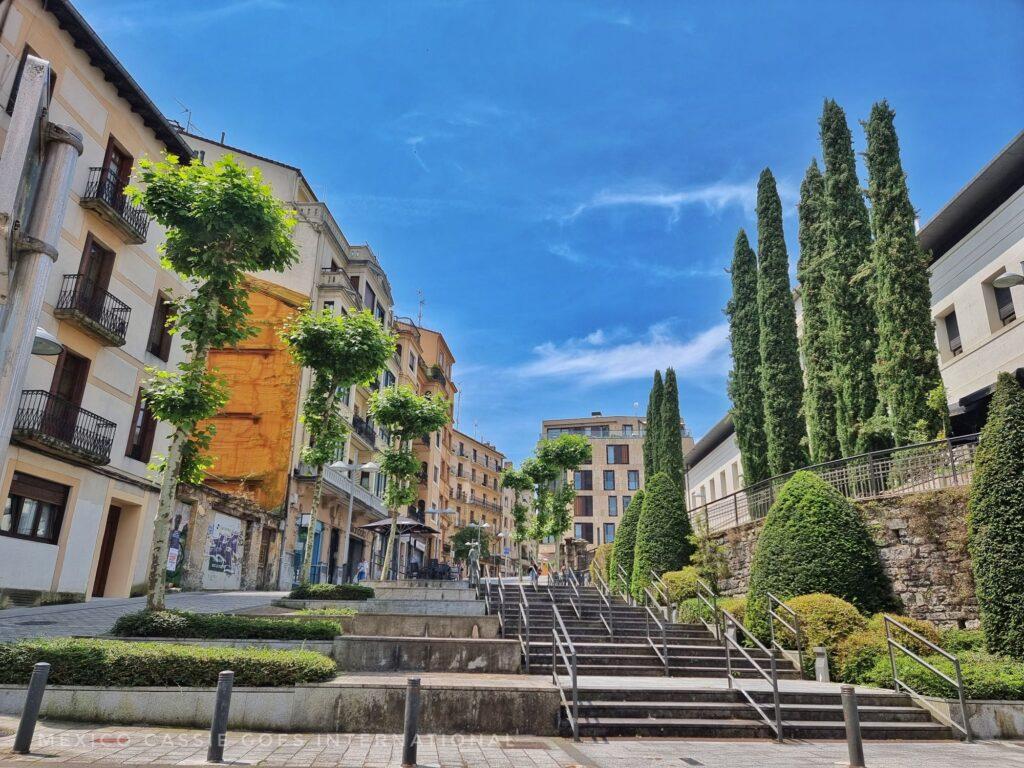
➡️ vist the fascinating Museo Romano Oiasso to learn about the town’s history
➡️ Ama Xantalen Baselizako Museoa – this is the ruins of a Roman necropolis and small funerary museum. It’s very interesting but can only be visited by asking to join a trip from the Museo Romano Oiasso. I was very lucky when I showed up and they let me join a group of school children heading there.
Hendaye, and crossing into France
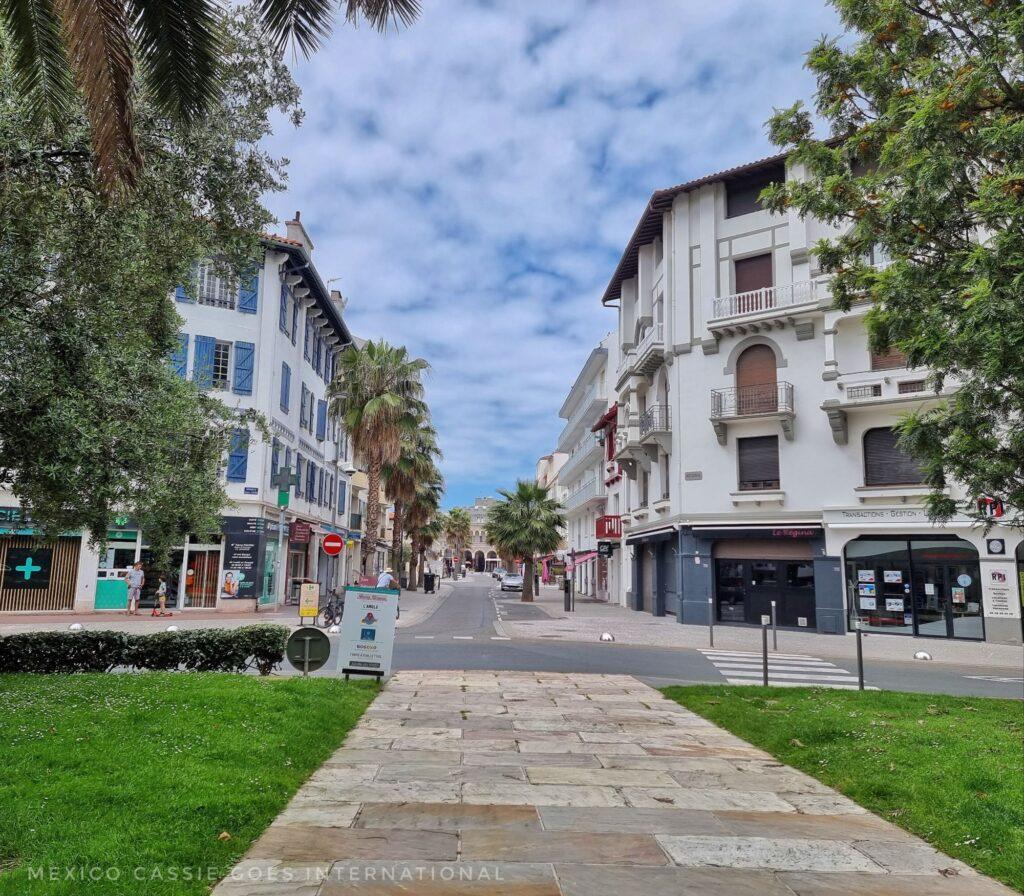
Hendaye is a lovely small town immediately on the other side of the border. As I said above, I actually took every form of transport over this border between Spain and France just for fun.
➡️ In Hendaye, head directly to the beach area. Here you’ll find souvenir shops, surf shops, restaurants and a lovely, gentle beach town.
➡️ Hendaye is not a big surfing spot but it’s a good place to learn because the surf isn’t too strong.
Of course, it’s also possible, from San Sebastian, to take a day trip to bigger French cities such as Biarritz. I haven’t been there since I was a naughty teenager (nope, not sharing those stories 😉) but I know it’s a wonderful opportunity to take.
👣 Full day tour of the towns of Biarritz & Bayonne as well as the French Basque countryside.
Zarautz, Getaria and Zumaia
These three small coastal towns make a great day trip if you want explore a bit more of the region. I took a boat trip to Getaria and then also hiked to all three as part of my Camino.
Zarautz has lovely old town centre and a magnificent beach, which is apparently the longest in the Basaque Country. All along the boardwalk are numerous sculptures – making this (in their words) the ‘saltiest open air museum in the world’. The whole of this town sits atop a colossal sand dune.
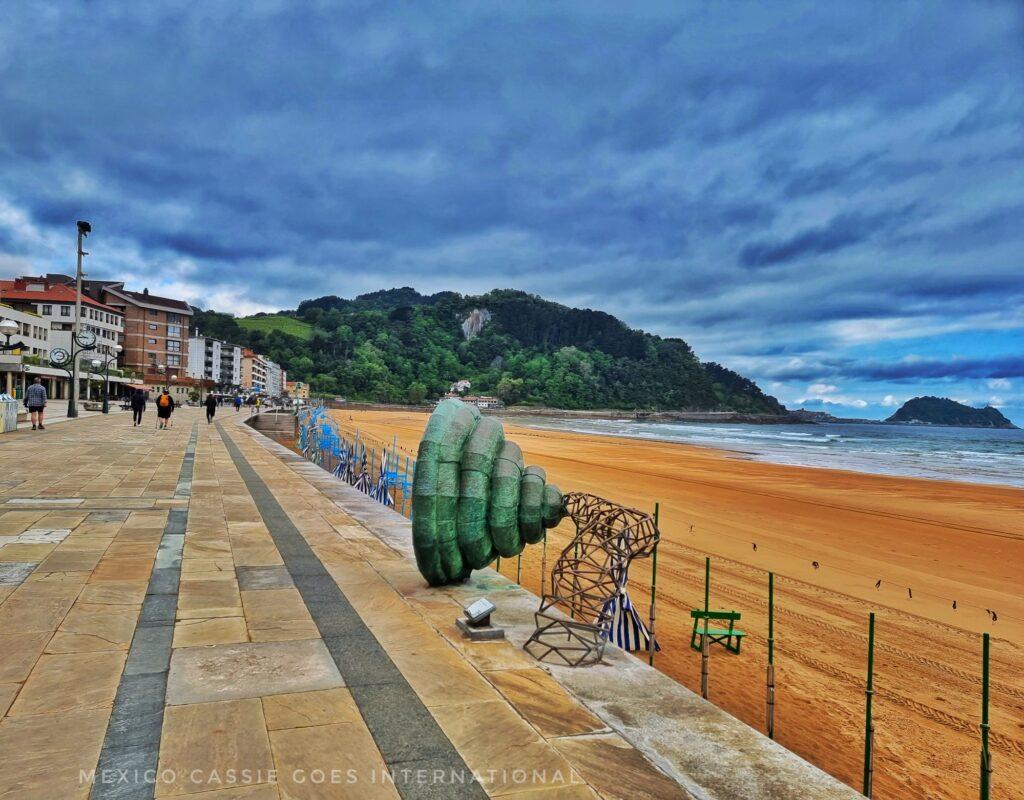
Getaria is a smaller town with a tiny marina, cute beach and txakoli vineyards. There is a famous fashion museum here.
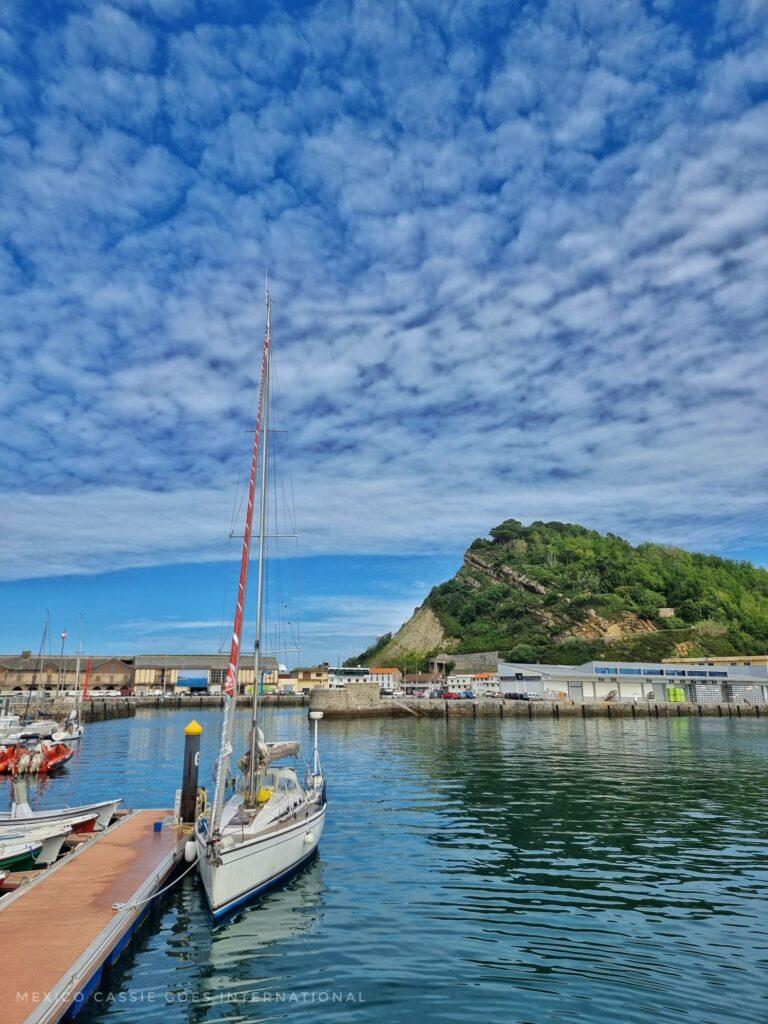
Zumaia has a great looking beach, where apparently some scenes from the 7th season of Game of Thrones were shot as well as a river that people enjoy using for water sports.
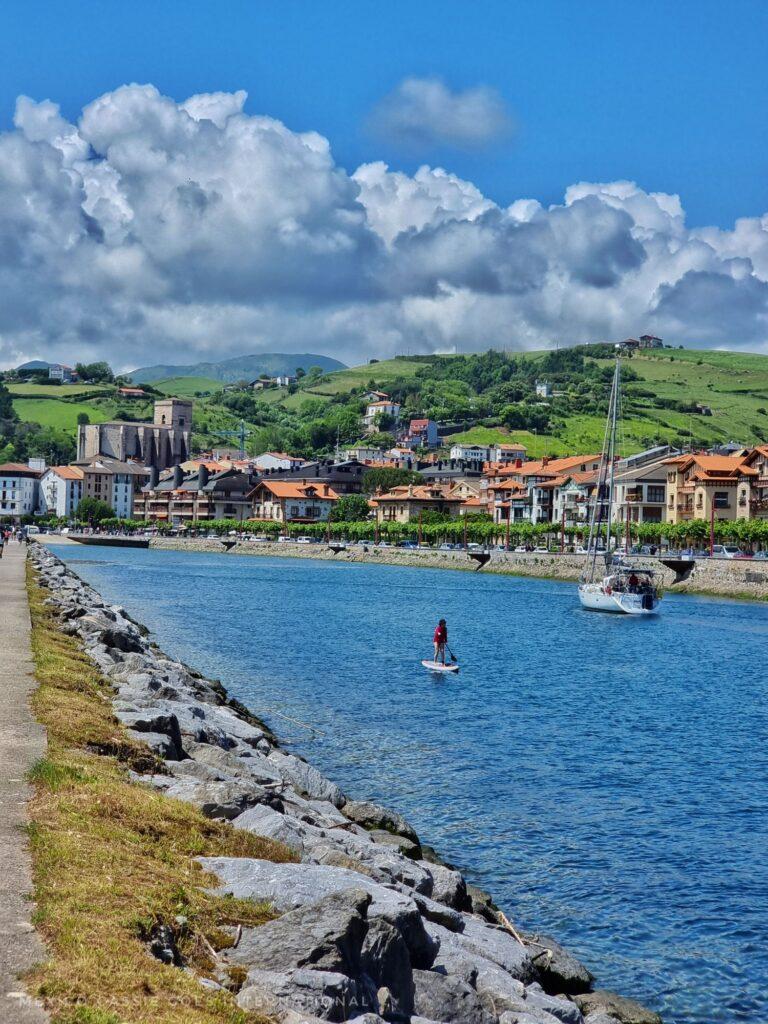
👣 Take a full day tour of these 3 locations
🚗 the three towns are only a half hour drive apart (in total)
🚆Easily done on the local train system
See the flysch rock formations in the Geopark
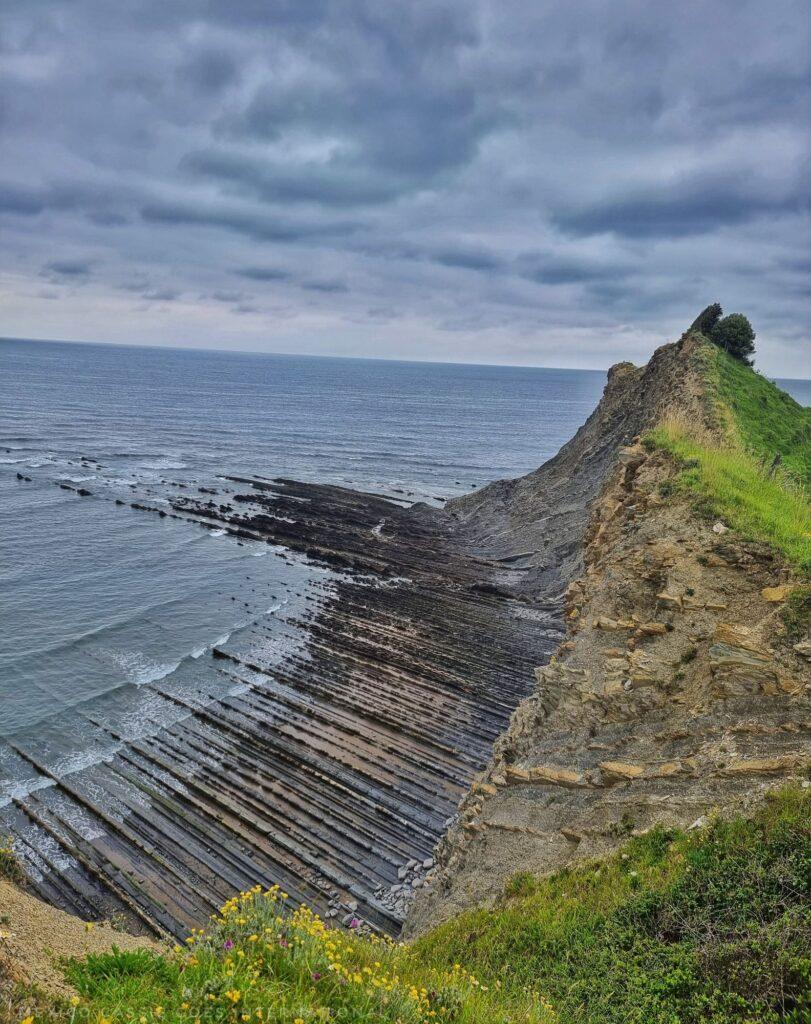
These coastal formations are some of the most fascinating and beautiful formations I’ve ever had the good fortune to witness. My brother and I walked many kilometres out of our way while we were hiking to see these rocks and it was worth every extra km.
It is hard to find regular tour operators offering trips to visit this region but when hunting around I found Geoparkea and Flyschbizkaia who offer tours.
What is this? What will you see?
Really, really cool layers of rock formations that were formed millions of years ago.
Flysch began forming under the sea 110Ma ago when sediment slowly accumulated over millions of years. Flysch layers can be limestone, or sandstone. In some cases the deposits are formed from enormous underwater sediment avalanches usually caused by the ocean floor sinking, which occurred when the Bay of Biscay opened and created turbiditic layers.
What we can see today along this awesome section of coast occured (apparently) during a period between the Cretaceous and Oligocene periods when the Iberian plate collided with the larger European plate causing all that sediment to fold, fracture and raise itself.
Where?
The two towns from whence most tours seem to start are Deba and Zumaia.
⭐️ Flysch Begiratokia – Baratzazarrak as far as I remember, there is a carpark here and it’s a pleasant 500m walk to the mirador
⭐️ Flysch de Sakoneta – google suggests it’s possible to drive all but the last section to reach this section of the coast. We definitely saw people around who didn’t appear to have hiked in like we had but I have no personal experience of trying to drive here.
Have a great trip!
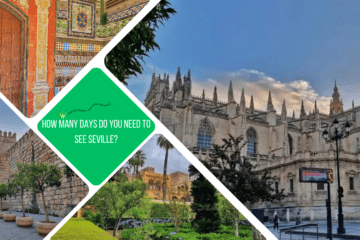
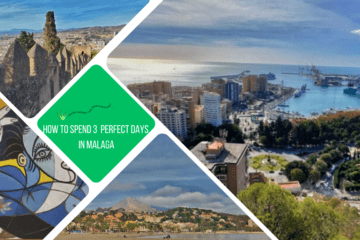
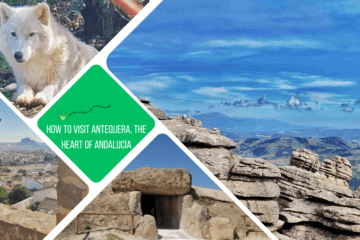
0 Comments